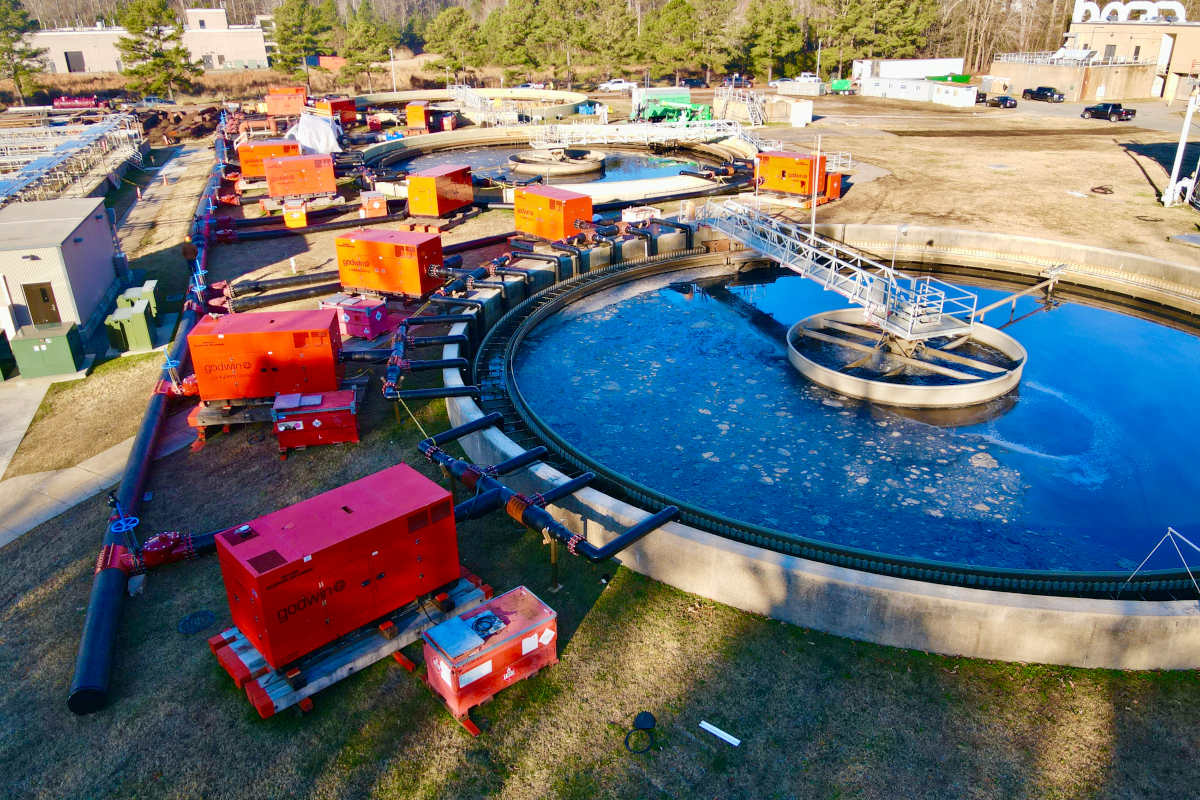
Transitions and Tough Terrain
As part of its culvert inspection and rehabilitation program for storm drain assets, California Department of Transportation (Caltrans) proceeded to rehabilitate a drainage line that was experiencing substantial infiltration, as well as showing signs of deterioration.
This stretch of pipeline runs directly underneath a major freeway in San Diego, California, so trenchless technology was a cost-effective solution with the least disturbance to the environment and the public.
Downstream Services Inc. of Escondido, California, (Downstream) was awarded the rehabilitation contract to install a UV GRP CIPP liner. Caltrans asked Downstream to present options for the approach to the project since access was going to be a challenge. The liner needed to start 111 ft from the closest upstream access point in a subdivision street.
RELATED: Emergency Culvert Reline and Repair in San Diego
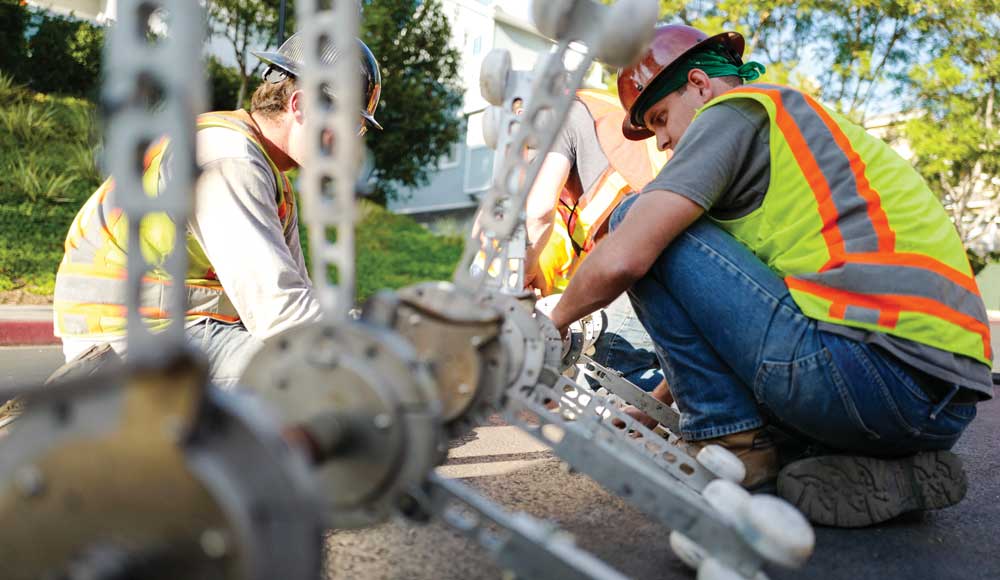
Downstream presented two options: 1) installation of a new access point within Caltrans right of way, or 2) confined space entry access for a remote liner deployment from inside the pipe. Addition of a new access point would not be a simple task as it would require the installation of a 36-in. diameter manhole structure to a depth of 50 ft on a slope with the presence of groundwater. Installation of a new access point would not only add expense but also extend the timeline for completion. It was decided that a remote liner setup, although somewhat costly and not without difficulty, would be the best option.
Downstream performed initial CCTV inspections to assess the condition of the pipe. The diameter and composition of the line changed from 54-in. RCP down to 48-in. CMP and back up to 54-in. RCP. Caltrans and Downstream collaborated on addressing the existing condition anticipating project challenges that include the transition in culvert diameter, and the existing ports that were used to inject grout and the band clamps that were installed when a segment of the culvert was remediated.
The length of the line to be repaired was 500 ft in total. To meet the required HS-20 load rating, a 48-in. diameter, 12.250-mm thick Alphaliner 1,500 UV GRP CIPP liner from Reline America would be utilized. It weighed approximately 60 lbs per ft for a total of 32,000 lbs including the roll off container it was delivered in. Although sections of the line were larger in diameter, the smaller 48-in. diameter liner was selected to ensure a smooth, tight form-fitting installation with no folds or excess crimping that were potentially possible when using an oversized liner in a small diameter section of pipeline with multiple diameter size transitions. The annular space between the 54-in. sections of host pipe and the cured liner would be injected with concrete grout.
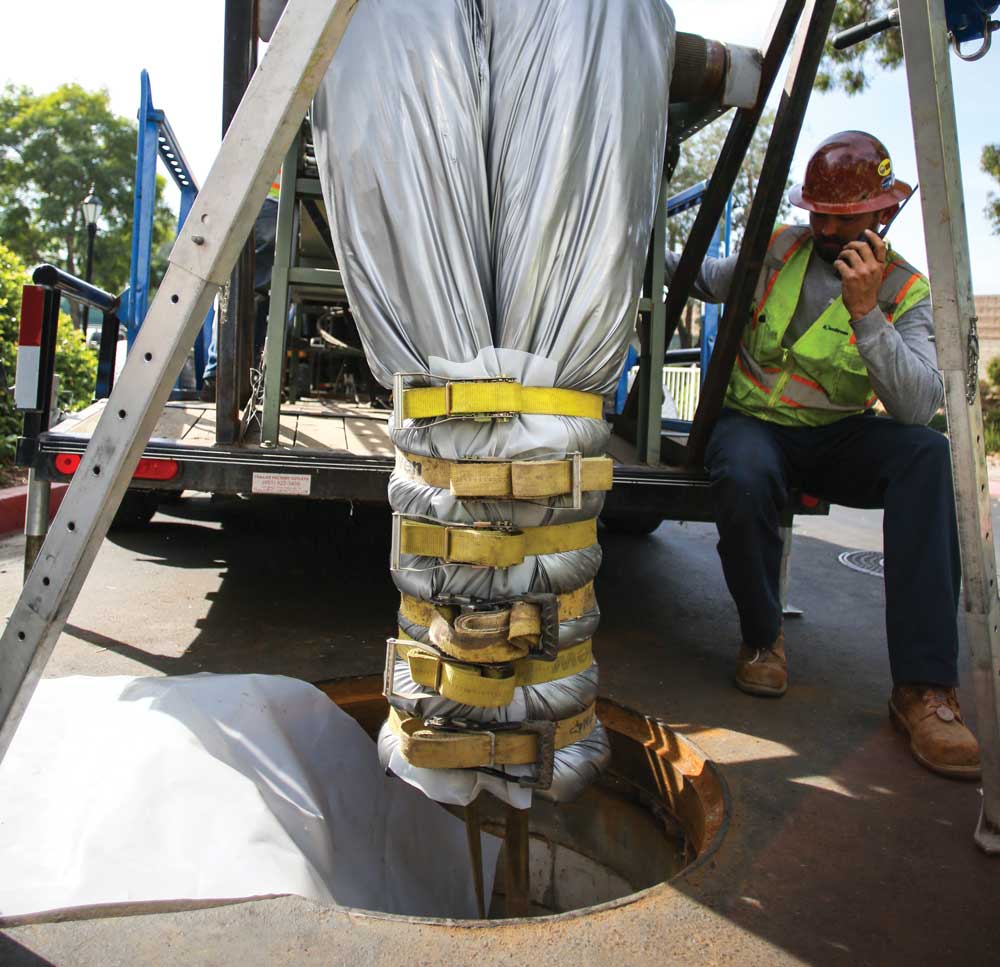
A tremendous amount of planning was required to limit the amount of community disruption. The crews would be staged in two different neighborhoods on opposite sides of the 16-lane freeway.
RELATED: Reline America – Changing the Face of Pipe Relining in North America
Communication was critical for safety and installation success and to make things even more challenging, cell phone service was infrequent in the area that the crews would be working. A special wireless communication system from a local provider was rented to facilitate the communication required for the duration of the project.
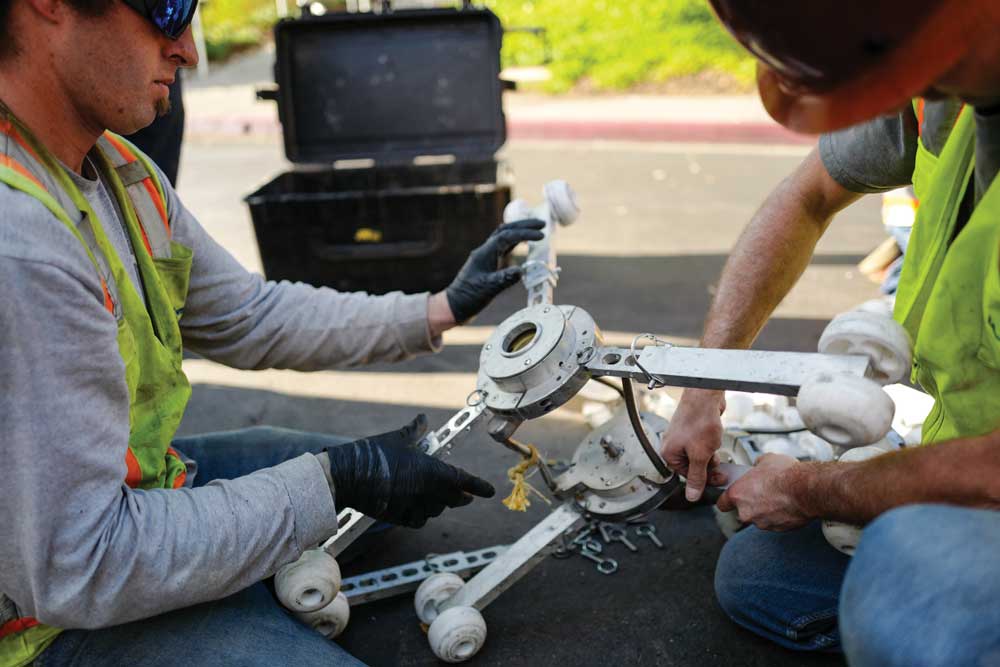
Before installation could begin some preparation of the line was required that included injection grouting of all noted spots where infiltration existed. Downstream utilized PUR H100 from Alchemy Spectec, an injection grout material mixed with an accelerator to act as a water stop. This installation was performed using all confined space manned entry work with crews on supplied air. Also during the prep phase the metal clamps and bands that had been spotted during the initial project inspection were manually ground down and made smooth and a durable HDPE slipsheet pre-liner installed so that there would be no sharp edges or points on the surface of the host pipe that could interfere with the installation of the liner.
RELATED: Inspecting Steel Pipelines to Safeguard San Diego’s Water Systems
Once the prep work was complete, staging of all of the equipment needed for the lining was moved into the area the night before so that the crews could get an early start as it was anticipated that it would be a very long day. Normally, in similar project locations for highway drainage rehabilitation, Downstream crews will stage equipment on the highway but due to uphill slopes this was impossible for this instance. Luckily, the homeowner whose property was situated closest to the downstream access point was cooperative and allowed the crews access through their yard to move in certain pieces of required equipment, easing their set up. At the upstream manhole location, crews had full traffic control and a detour as the liner had to be positioned in line with the direction of the host pipe, requiring the closing of a small access road through the neighborhood.

Each member of the 10-person crew was driving in a piece of equipment to the site. These included the liner truck and trailer rig which houses the UV light curing system, a rolloff truck which held the liner inside of a rolloff container, blower truck to inflate the liner, underground support truck with a backup blower unit, additional support and tool trucks, a pumper truck and CCTV inspection vehicle.
A capstan winch was set up at a manhole downstream of the access point on the slope behind the property where the lining would terminate. This manhole was a drop connection, so it was necessary to build a special platform inside the box so that the team had something to stand upon and be at level with the pipe that was being lined. A 36-in. lateral and an 8 in. lateral that were assumed to be irrigation drainage lines were plugged as a precaution so that nothing overflowed. The winch cable was pulled from the downstream manhole, traveling under the freeway to the upstream access point utilizing a tag line that was pulled through the pipe using Downstream’s CCTV inspection tractor as a mobilization device.
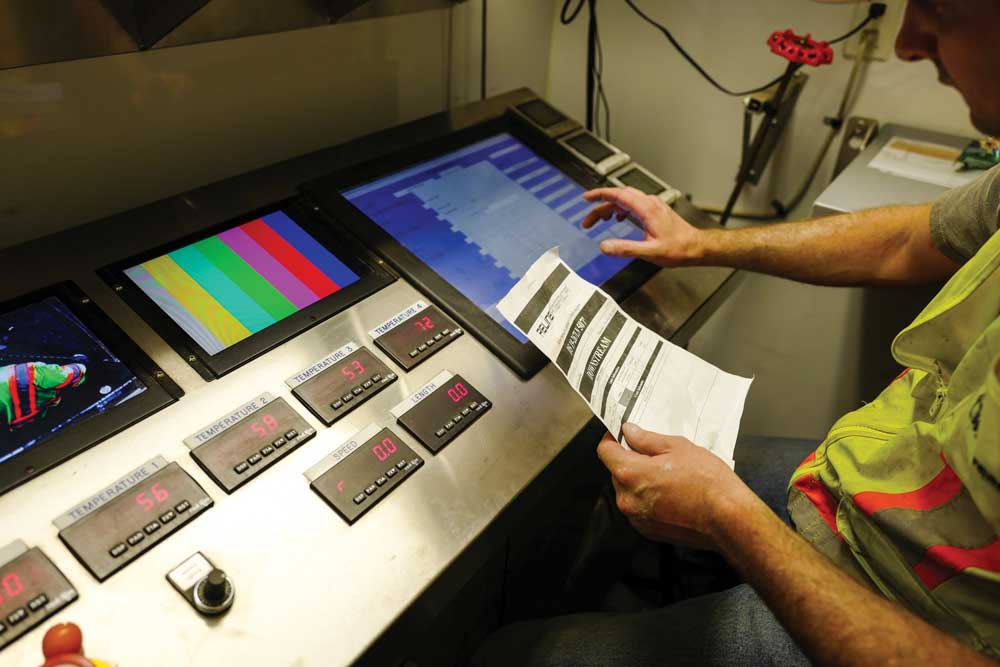
The liner was then prepared and folded by Downstream’s custom funnel trailer and attached to the constant tension winch cable in order to be carefully pulled downstream. The pulling process took approximately two hours. Extra care was needed as the liner was being inserted and maneuvered around a large radius bend that started 70 ft from the insertion point. Once the liner was in place, confined space crews entered at the upstream manhole and crawled 111 ft downstream to the remote start point to install the airtight end cap on the liner, while crews on the opposite side of the freeway capped their end of the liner as well. Following this, the liner was inflated by the blower truck and once it achieved proper inflation pressure the Reline America UV Curing light train was inserted at the upstream end through the end cap lid. Another smaller winch called the Third Man, pulled the light train from the liner cure rig to the downstream endpoint of the line. During this process, a camera on the light train inspected the liner to ensure that the liner inflated properly and that there were no issues before the curing process would begin. Once quality was assured the 1,000 watts of UV curing light were activated, and the light train was slowly winched backward to the upstream start point. The cure speed for this liner was approximately ½ to 1 ft per minute and was controlled by the system to ensure a full cure was being achieved. The lining workday was approximately 16 hours so the crews were given a much-needed rest period the following day before returning to the project site to perform end trimming of the liner and begin the concrete grouting work needed to fill the annular space.
Bulkheads were built at the ends of the liner in order to safely pump annular grout of concrete in. Although the crews knew that the liner was sealed and secured in the section that was 48 in. in diameter they wanted to ensure that the pressure from the concrete would not push the liner or shift its position. Concrete grouting was pumped into the annular space in the 54-in. sections of the pipeline in 100-ft increments so that the pressure would not be too much. This process took approximately four days to complete and required five ready-mix concrete trucks and concrete pumpers.
The entire project from initial inspection to full rehabilitation and return to service was approximately one month in duration. Although fraught with unusual challenges, Downstream Services extensive experience as a Reline America UV GRP CIPP installer, innovative problem-solving skills and extensive fleet of equipment made this very tough, large diameter, remote start rehabilitation project successful and definitely one for the company’s bragging books.
Suzan Marie Chin is CEO of Creative Raven. Photography was provided by Maurice Wright.




